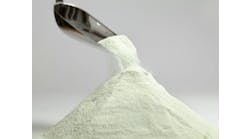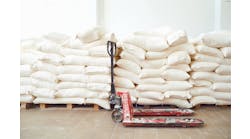Agricultural and food production facilities had five years to schedule and complete Dust Hazards Analysis (DHA) of their operations and processes from the effective date of the new NFPA 652 Standard on Fundamentals of Combustible Dust standard, which was Sept. 7, 2015. You must also demonstrate reasonable progress in each of the five years. At this point, you should be well on your way towards compliance with the requirements of NFPA 652.
NFPA 652 provides general requirements for management of combustible dust fire and explosion hazards and to direct organizations to the appropriate NFPA industry or commodity-specific standard. For agricultural and food production facilities, the industry-specific standard is NFPA 61: Standard for the Prevention of Fires and Dust Explosions in Agricultural and Food Products Facilities.
If the requirement in an industry-specific NFPA standard differs from or specifically prohibits the requirement in NFPA 652, then the requirements in the industry-specific NFPA standard must be followed. However, if an industry-specific NFPA standard neither prohibits nor provides a requirement then the requirement in NFPA 652 shall apply.
NFPA 652 requires that the owner/operator (you) of a facility where potentially combustible dusts might be present shall be responsible for the following:
Determining combustibility and explosibility (Go/No Go) of materials.
This can be based on the following:
- Laboratory analysis of representative samples
- Historical facility data
- Published data – only if representative of current materials and process conditions
- One is also permitted to assume that a material is explosible, forgoing the laboratory analysis
Conducting a Dust Hazard Analysis (DHA)
A DHA is a systematic review to identify and evaluate potential dust fire and explosion hazards in a process or facility where combustible/explosible powder is handled or processed. A DHA must be conducted by someone with proven expertise in dust explosion hazards.
For new construction and facility processes that are undergoing significant modification (modifications exceeding 25 percent of the replacement cost of the equipment system), you must complete DHAs as part of the project.
For existing processes and facility compartments, you must schedule and complete DHAs of bucket elevators, conveyors, grinding equipment, spray dryer systems and dust collection systems within a five-year period from the effective date of the standard (September 2015).
- Managing identified fire, flash fire, and explosion hazards: You shall be responsible for managing the identified fire and explosion hazards by considering the building and equipment design, housekeeping, ignition source control, personal protective equipment, dust control, explosion prevention, protection and isolation, and fire protection.
You may conduct a documented risk assessment in lieu of prescriptive requirements of NFPA 652 to determine level of design and protection features for the building, protection for the equipment, ignition source control and explosion protection.
- Establishing written safety management systems: You are required to establish written management systems for operating your facility and equipment to prevent or mitigate fires, deflagrations and explosions from combustible particulate solids. These written management systems that are required for new and existing facilities and processes include operating procedures and practices, training, incident investigation, and employee participation.
Effective management of dust flash fires and explosions in your facilities often requires:
- Applicable data regarding combustibility, ignition sensitivity, electrostatic, self-heating and explosion characteristics of the dust(s)
- Good understanding of all operations and processes
- Conducting a Dust Hazard Analysis
- Identifying locations where explosible atmospheres could be present
- Identifying potential ignition sources that could be present under normal and foreseeable abnormal conditions
- Evaluating all potential dust fire, flash fire and explosion hazards in the process and facility
- Ensuring safety through properly defined and practical fire and explosion prevention and protection measures - “Basis of Safety”
- Establishing effective written safety management systems
- Regular review and maintenance of management systems, process safety data and information, training, process-control systems, processing equipment, and the facility.
About the Author: Vahid Ebadat, Ph.D., M.Inst.P, MIET, C.Phys., is CEO of Stonehouse Process Safety. Call 609-610-6570, email [email protected] or visit www.stonehousesafety.com.

